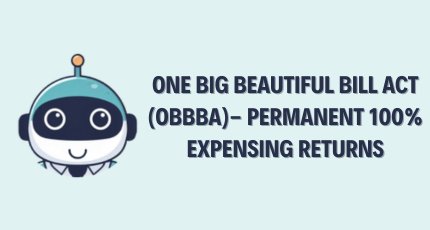Federal vs State Tax Projections – Key Differences, Rules & CPA Workflow

[Last Updated on 4 days ago]
Ever wonder why a client’s “tax number” looks different in two places—even when the income is the same?It’s because the U.S. runs on two overlapping systems:
- Federal income tax (set by the IRS) and
- State income tax (run by state Departments of Revenue like California FTB or New York DTF).
Each system uses its own rules—different tax bases, brackets, deductions, and credits, plus special items like SALT cap, PTET elections, QBI (§199A), AMT, and NOL carryovers.
Add real-life variables— residency vs. domicile, part-year moves, remote work wage sourcing, and multi-state pass-through income (K-1s)—and you can see why two projections rarely match.
Even everyday items like W-2 withholding, RSU vesting, and estimated tax safe harbors can swing results once apportionment and credits for taxes paid to other states enter the picture.
For CPAs and EAs, this guide turns the noise into a clear playbook. We’ll explain the Federal and State income tax, compare them, and then walk through a simple, defendable workflow you can reuse across clients.
So, without any further ado, let’s start!!!
Table of Contents
- Why Do Federal and State Tax Projections Differ?
- Federal vs. State Tax Projections Comparison Table
- Which Core Inputs Improve the Accuracy of Tax Projections?
- What Workflow Helps CPAs Create Defendable Federal and State Tax Projections? (Step-By-Step)
- Which High-Impact Scenarios Should CPAs Model for Better Client Outcomes?
- What Common Mistakes Cause Inaccurate State Tax Projections & How Can CPAs Avoid Them?
- How Does CPA Pilot Simplify Federal and State Tax Projections for CPAs?
- Federal vs State Tax Projections FAQs
Why Do Federal and State Tax Projections Differ?
Federal and state numbers drift because states don’t always follow the same tax rules or timing, and where you live and earn can shift what each state can tax.
Move mid-year, work remotely, or get K-1 or RSU income, and your totals change again due to sourcing and credit ordering. That’s why federal vs state tax projections rarely match.
What Makes Federal and State Tax Projections Diverge?
- Different “starting lines”: States update the federal code on different dates or only for certain items. A deduction that counts federally may be reduced or added back by a state.
- Credit sequencing matters: Credits for taxes paid to other states often apply in a specific order. Get the order wrong and you can overpay or underpay.
- Income location changes tax:
- W-2 wages generally follow where the work was performed (remote rules can complicate this).
- K-1 income is spread by apportionment factors (sales, payroll, property).
- RSUs/stock compensation are sourced by the days you worked in each place during the vesting period.
- Residency and domicile drive exposure: Full-year resident, part-year, or nonresident status changes what a state can tax and whether you qualify for credits.
- Cash-flow knock-ons: Withholding rates, estimate schedules, and safe-harbor thresholds differ by state, affecting penalties and quarterly planning.
Quick example:
A client moves from California to Texas on June 30. She earns W-2 wages all year, an RSU vests on May 15, and she has a K-1 with multistate activity.
- W-2: California taxes wages earned through June 30; Texas has no wage income tax for the rest of the year.
- RSU: The vest value is sourced by workdays in each state during the vesting window; a big May vest concentrates tax in CA.
- K-1: State tax follows the entity’s apportionment, not where the owner lives; CA may tax its in-state share even after the move.
- Credits/Estimates (cleaned up): For the CA-resident period, claim California’s credit for taxes paid to other states where the same income was taxed; after moving to Texas, there’s no resident credit because TX has no personal income tax. Update federal and CA estimates (e.g., a Q2 payment for the May RSU), and stop making state wage-tax estimates post-move.
Federal vs. State Tax Projections Comparison Table
The main difference between federal and state tax projections is that federal projections follow uniform IRS rules, while state projections depend on each state’s tax code and conformity level. Federal laws set the baseline; state rules adjust for residency, sourcing, and unique deductions or credits, creating different final liabilities.
| Dimension | Federal Tax | State Tax | Why CPAs Care |
|---|---|---|---|
| Tax base & conformity | Uses the Internal Revenue Code (IRC) | Conform fully, partially, or on a past date; some items decoupled | Different starting rules = different numbers |
| Rates & brackets | Seven progressive brackets | Progressive, flat, or none (no wage tax in some states) | Same income, different rate math |
| Standard vs itemized | Standard deduction available | Varies: some mirror, reduce, or skip | Itemization may switch state-side |
| Credits (Dollar-for-dollar reductions) | Federal credits with phase-outs | Unique state credits; ordering can differ | Credit sequencing can change liability |
| QBI (§199A) | Allowed with limits | Many states add back or limit | Don’t assume federal benefit flows through |
| AMT(Alternate minimum tax) | Federal AMT rules | Some states have their own AMT | Separate AMT modeling may be needed |
| NOLs(Using losses to offset income) | Federal carry rules | Different carry periods and limits | Maintain separate NOL ledgers |
| SALT & PTET(State/local tax deduction & PTE elections) | SALT deduction cap applies | PTET elections in many states | Coordinates entity vs individual tax |
| Residency & domicile | Not applicable | Resident, part-year, nonresident | Drives credit eligibility and scope |
| Sourcing rules | Not applicable | Wages, K-1s, and equity comp sourced by location/period | Apportionment shifts liability |
| Other-state credit | N/A | Resident states often allow credit | Order matters to avoid overpaying/underpaying |
| Withholding & estimates | Federal withholding + 1040-ES | State-specific withholding + estimates | Different calendars and safe harbors |
| Filing calendar | Fixed federal dates | Varies by state | Missed state dates = penalties |
| Documentation | Federal citations | State DOR regs, rulings, instructions | Needed for defendable workpapers |
Same client, same income—different rulebooks. That’s why two “correct” numbers can disagree.
Which Core Inputs Improve the Accuracy of Tax Projections?
Accurate projections start with clean inputs. If the data is fuzzy—status, wages, K-1s, RSUs, withholdings—your federal and state outputs will both drift, and the drift won’t match.
Use this pre-workflow checklist (Step 0):
- Filing profile
- Filing status, dependents, residency timeline (move dates), domicile evidence.
- Why it matters: status sets brackets/credits; residency dates drive who taxes what.
- Income map (by bucket and by state)
- W-2 wages: employer states, remote days, work location history.
- Pass-through (K-1s): state apportionment factors, entity elections (e.g., PTET).
- Investments: interest/dividends, capital gains with trade dates and states.(OBBBA legislative impact)
- Equity comp: RSU/ISO/NSO vest/exercise/sale dates + where you physically worked during each relevant period.
- Why it matters: sourcing and apportionment depend on the where and when.
- Adjustments, deductions, and add-backs
- Above-the-line items, retirement/HSA, state-specific add-backs (e.g., QBI treatment), itemized details (SALT, mortgage, medical).
- Why it matters: states often decouple—don’t assume federal treatment flows through.
- Credits and ordering
- Federal credits, state credits, and credit for taxes paid to other states.
- Why it matters: wrong order = over/under-crediting and avoidable penalties.
- Withholding and estimates (cash paid in)
- YTD federal/state withholding by employer and state, 1040-ES and state ES payments, safe harbor thresholds. (check our latest blog on last-minute tax planning tips with AI)
- Why it matters: determines refund vs. balance due and underpayment penalties.
- Timeline & documents
- Calendared events (move date, big vest/sale, bonus), pay stubs, brokerage 1099s, K-1s, employer state reports, prior-year returns.
- Why it matters: dates tie income to states and support defensibility.
How this feeds the workflow:
- Step 1 (Federal baseline): Status + income + adjustments → federal taxable income and credits.
- Step 2 (State layers): Apply each state’s add-backs/deductions to the same inputs.
- Step 3 (Allocate income): Use your income map to split W-2, K-1, and equity comp across states.
- Step 4 (Residency rules + credits): Apply resident/part-year/nonresident logic and then credit ordering.
- Steps 5–6 (What-ifs + deliverables): Change dates or comp mix, recompute estimates, and produce client-ready memos.
With inputs locked, the next step is how you assemble them in a consistent, defensible way—every time.
What Workflow Helps CPAs Create Defendable Federal and State Tax Projections? (Step-By-Step)
Build the federal number first, layer state rules, split income by where it belongs, apply residency and credit ordering, test a few what-ifs, then package estimates and a short memo. That’s the whole playbook in six clean moves.
The six moves
- Build the federal baseline: Compute AGI → taxable income → tentative tax → credits → payments. This is your “single truth” before any state math.
- Layer each state’s rules: Apply the state’s conformity date and specific add-backs/subtractions (QBI, SALT/PTET, AMT, NOL handling). Note only what changes vs. federal.
- Allocate income to states: Use dates/locations already captured: split W-2 by work location, apportion K-1 by the entity’s factors, source RSUs by vesting workdays. Keep a small by-state grid that reconciles to totals.
- Apply residency and credit ordering: Determine resident/part-year/nonresident periods and then compute credit for taxes paid to other states in the correct sequence to avoid double tax.
- Run the decisive what-ifs: Shift move dates, RSU timing, or S-Corp comp; recheck cash flow and underpayment exposure. Save the best option for the client with one paragraph of reasoning.
- Package deliverables: Produce (a) a one-page summary, (b) federal/state estimate schedules, and (c) a short memo that lists assumptions, sourcing logic, and credits—so reviews and sign-offs are fast.
With the process nailed, let’s focus on the scenarios that actually move dollars.
Use CPA Pilot’s built-in Tax projection workflow to calculate, cite, and document every state’s adjustments automatically — saving hours per return. Schedule a demo to know more!
Which High-Impact Scenarios Should CPAs Model for Better Client Outcomes?
Model the moments that change sourcing, credits, or timing: a mid-year move, RSU vest or sale timing, S-Corp salary vs distribution, and multi-state K-1 apportionment. These are the levers that actually move cash flow and penalties.
The big four scenarios
- Mid-year move (resident → new state): Split the year, then check credit ordering so the same income isn’t taxed twice.
- Equity comp timing (RSUs/NSOs/ISOs): Vesting and sales straddle states; days worked during the vesting window decide who pays what taxes.
- S-Corp compensation mix: Changing W-2 vs distributions shifts payroll tax and sometimes state exposure.
- Multi-state pass-through income (K-1s): Your residence doesn’t control this—entity apportionment does. That can surprise clients after a move.
Quick before/after (illustrative) — Mid-year CA → TX with RSU and K-1
Facts: Move on June 30; $180k W-2 across the year; RSU vests May 15 worth $40k; K-1 has 20% CA apportionment.
Goal: Show why cash changes even when “income is the same.”
| Item | Before Tax planning | After Tax planning tweaks |
|---|---|---|
| CA taxable wages (Jan–Jun split) | $90,000 | $90,000 |
| RSU sourced to CA (workdays in vest window) | $40,000 | $40,000 |
| K-1 income taxed by CA (20% apportionment) | $8,000 | $8,000 |
| Estimated CA payments made by Q2 | $0 | $3,500 |
| Federal 1040-ES adjusted in Q3/Q4 | No | Yes |
| Underpayment penalty risk | High | Low |
| Client cash due next April (state + fed) | Higher, bunched at filing | Smoother, spread via estimates |
What changed?
- We didn’t change the income—just timing and estimates.
- Paying a CA Q2 estimate for the May RSU and right-sizing federal Q3/Q4 reduced penalties and the April surprise.
- No Texas resident credit exists (TX has no personal income tax), but CA may allow another-state credit if any overlapping source state taxes the same income during the CA-resident period.
Now that we’ve seen what moves the needle, let’s prevent the mistakes that make state results go sideways.
What Common Mistakes Cause Inaccurate State Tax Projections & How Can CPAs Avoid Them?
Most errors come from assuming state rules copy federal rules, mis-ordering credits, forgetting part-year timing, and skipping estimate updates after big events like a move or RSU vest.
Fix those, and your federal vs state tax projections get a lot more accurate.
The pitfalls of Distort State Projections and the fixes
- Assuming “federal flows through”
- Pitfall: Treating deductions/credits (QBI, SALT/PTET, NOLs, AMT) the same at the state level.
- Fix: For each state, check conformity date and line-by-line add-backs/subtractions before you compute tax.
- Wrong credit ordering
- Pitfall: Taking a resident credit (taxes paid to other states) in the wrong order or on the wrong base, creating over/under-credit.
- Fix: Calculate source-state tax first, then resident-state credit using the state’s specific formula and limits.
- Ignoring part-year timing
- Pitfall: Not splitting wages, equity comp, and deductions at move date; missing split-year returns.
- Fix: Anchor everything to dates: residency start/stop, vest, exercise, sale, bonus pay date.
- Mis-sourcing income
- Pitfall:W-2 follows employer state, K-1 follows residence, RSU follows payout location—these assumptions are often wrong.
- Fix: W-2 usually follows where services were performed; K-1 follows apportionment; RSU/ISO sourcing follows workdays in the vest/exercise window.
- Estimates and safe harbors left on autopilot
- Pitfall:Not updating 1040-ES and state ES after a move, RSU, or K-1 swing; missing state-specific safe harbors.
- Fix:Recompute Q2–Q4 as facts change; document which safe harbor you’re using (prior year vs current year).
- One-state mindset for multi-state earners
- Pitfall: Modeling only the resident state and ignoring nonresident/source states.
- Fix: Build a by-state grid first; if any income touches a state, include it and then credit back at the resident level.
- Workpapers without citations
- Pitfall: Hard to defend at review or audit; juniors can’t repeat the logic.
- Fix: Save state DOR cites (reg/ruling/instruction) next to each adjustment and credit formula.
Avoid tax projection pitfalls. CPA Pilot flags nonconformity issues, missing credits, and unsafe estimates automatically — giving you a defendable paper trail for every scenario. Check CPA Pilot Pricing Now!
How Does CPA Pilot Simplify Federal and State Tax Projections for CPAs?
Federal and state results differ because rules, timing, and where income is earned don’t line up. When you control inputs, apply residency and sourcing correctly, and order credits the right way, your numbers become predictable—and defendable.
Try it in AI Tax Assistant like CPA Pilot: run federal vs state tax projections side-by-side, generate estimate schedules, and export client-ready memos with cited logic—fast for partners, simple for solos, and safe for juniors.
Federal vs State Tax Projections FAQs
Do city or local income taxes change my projection?
Yes. Places like NYC or Philly add local tax on top of the state tax. If you live or work there, include those rules, withholding, and estimate dates to avoid surprises.
How do I prove residency vs. domicile if I’m audited?
Keep a move log (dates), lease/deed, driver’s license, voter reg, school/medical ties, and days-in-state. Match these to wage location and RSU/K-1 timelines.
Do pensions, 401(k), or IRA withdrawals get taxed by my old state?
Usually, they’re taxed by your current resident state; many source states don’t tax nonresidents’ retirement income. Check state exceptions.
How does bonus depreciation affect state tax projections differently than federal?
Many states don’t follow the federal 100% bonus depreciation rule, requiring add-backs or adjusted timing. These differences change projected state taxable income. Learn more in our bonus depreciation explainer.
What is a PTET election and how does it lower an individual’s SALT exposure?
A PTET (Pass-Through Entity Tax) lets the entity pay state income tax on behalf of owners, bypassing the federal SALT cap and reducing personal exposure. See our PTET and pass-through entity guide.
Why does the SALT deduction cap matter for multi-state CPAs running projections?
The $10,000 SALT cap limits federal deductions, but PTET elections or entity-level taxes may restore part of the deduction at the state level. Explore how in our SALT deduction breakdown.
Do all states allow the Qualified Business Income (QBI) deduction?
No. While the IRS permits a 20% federal QBI deduction, many states disallow or partially conform to §199A. See conformity examples in our QBI deduction guide.
How does AI help CPAs research multi-state tax rules faster?
AI tools like CPA Pilot read IRS and state code side-by-side, generating cited answers for residency, conformity, and projection logic. Learn how in our AI for tax research article.
How often do state tax codes conform to new federal laws like the OBBBA?
Some states adopt federal updates automatically (rolling conformity), others require legislation (static). The gap can distort projections. Read our OBBBA Act explainer for examples.





